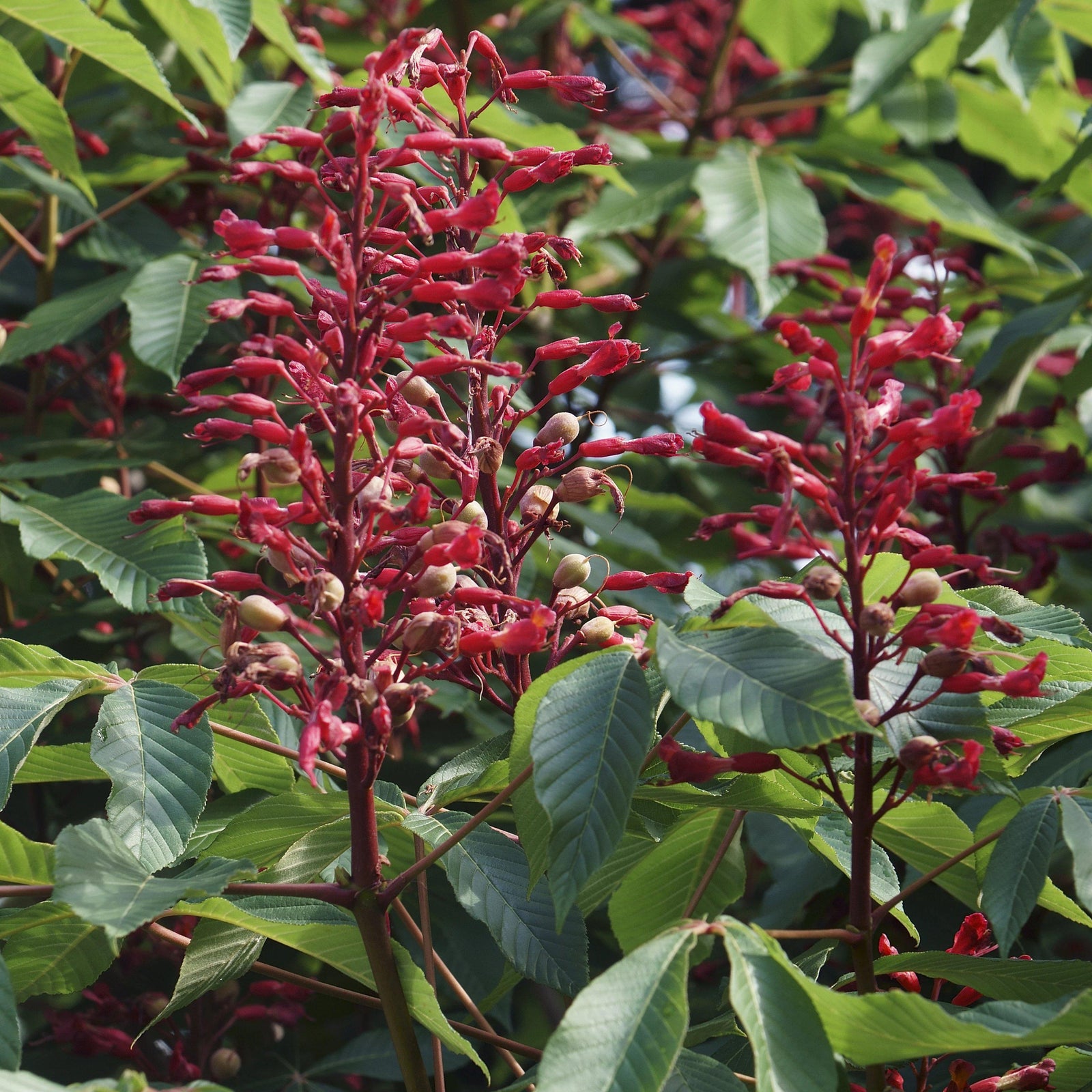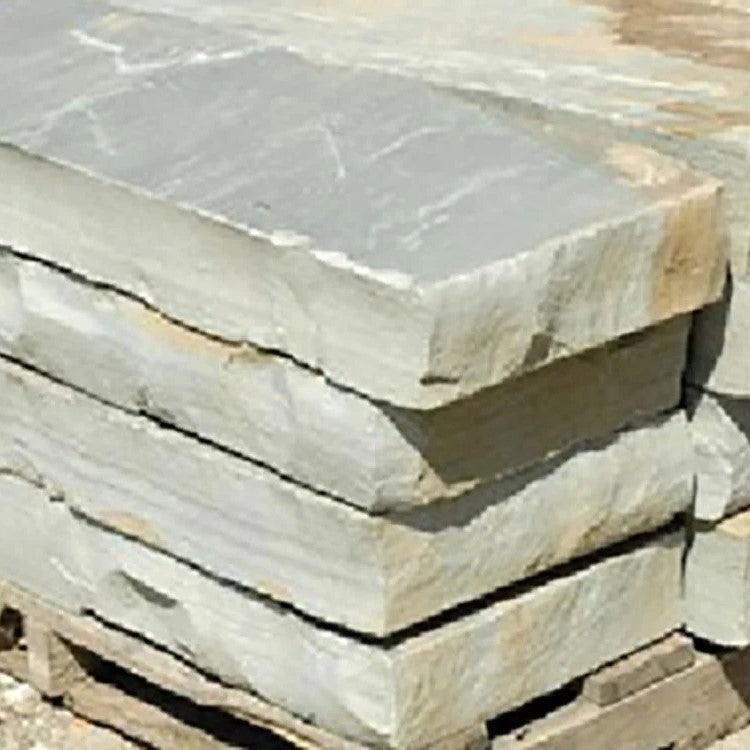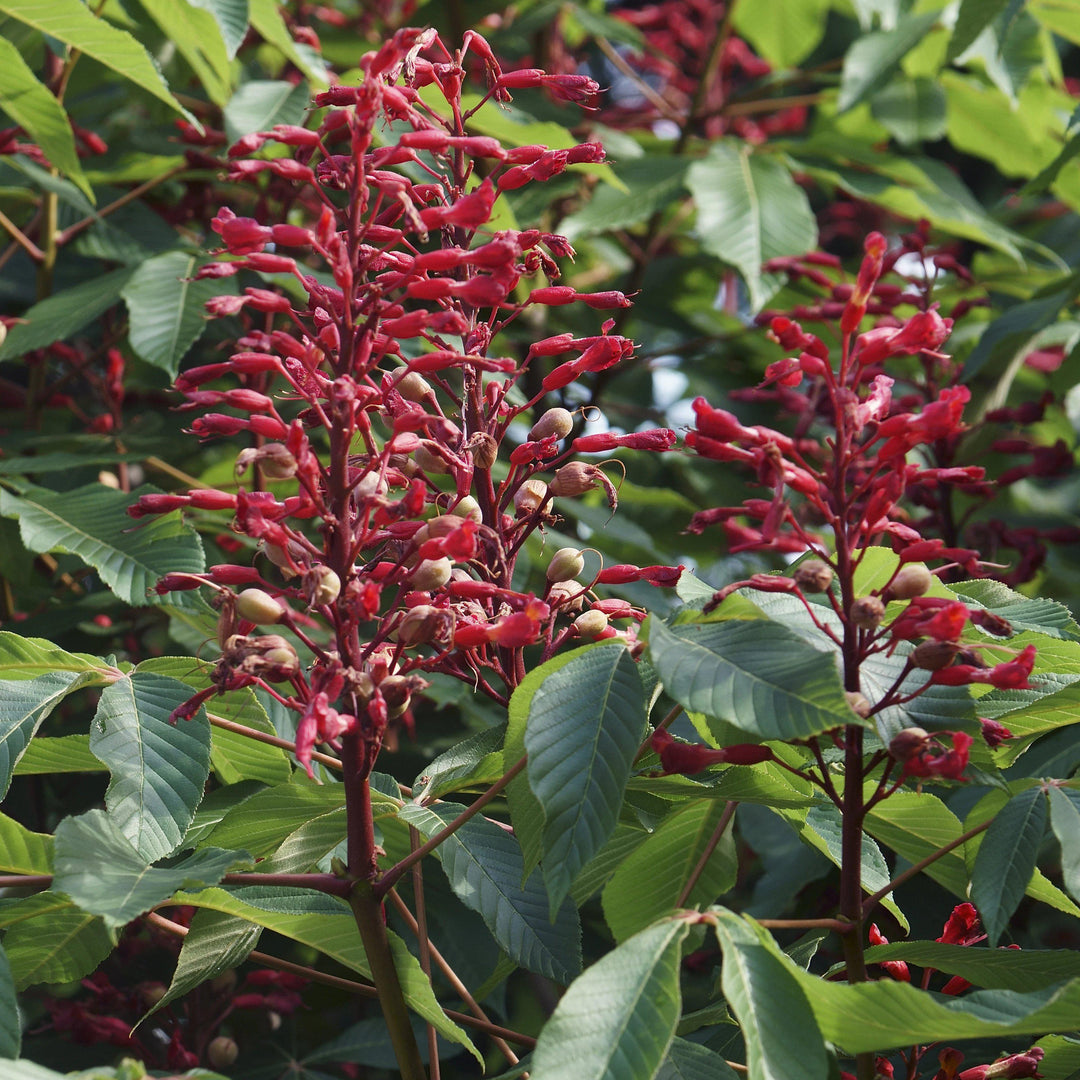The Red Buckeye, also known as Aesculus pavia, is a small deciduous tree or large shrub that is native to the southern United States. It's known for its showy red flowers in spring and its unique, buckeye nuts in the fall.
This plant typically grows to a height of 10-20 feet with a similar spread. It prefers full sun to part shade and thrives best in well-drained, moist, fertile soils. The Red Buckeye is a great choice for small landscapes or as an understory tree in larger landscapes.
The flowers of the Red Buckeye are red and appear in upright clusters in the spring. The leaves are compound and have a dark green color. The buckeye nuts are encased in a husk and are a favorite of squirrels.
|
Type: |
|
|
Origins: |
Southeast N. America, GA Native |
|
Height: |
12' - 15' |
|
Spread: |
12' - 15' |
|
Spacing: |
12' |
|
USDA Hardiness Zone: |
4 - 7 |
|
Culture: |
|
|
Bloom Color: |
Red |
|
Season of Interest: |
MAINTENANCE NEEDS: Low maintenance. Watering can be reduced after establishment. Leaf blotch may be an issue. Flowers and seed dropping can be messy.
LANDSCAPE USES: Accents or Group Plantings, Borders, Woodland Gardens, Naturalized Areas, Ponds and Streams, Foundation Plantings, and Hedges.
COMPANION PLANTS: Huechera, Hosta, Red Maple
IMAGE: Photo by Maggie, Aesculus pavia
*As plants have ranges in appearance they may not appear as the images shown

























































